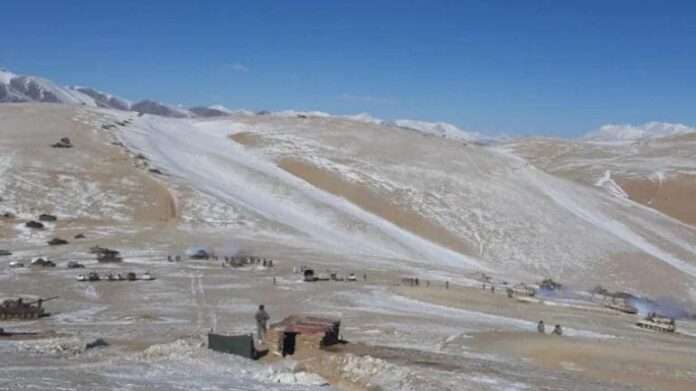Troops along LAC a new normal | Several border disputes unresolved
New Delhi: As India and China work to sort out the impasse along the Line of Actual Control (LAC) in eastern Ladakh, multiple reasons prevent India from de-escalating its troops and equipment or de-inducting them from the existing positions, a report in The Tribbune, Chandigarh, says.
The disengagement at Gogra Hot Springs (patrolling point 15), verified on September 13, was only a pullback of troops by a few kilometres, sources said.
The stationing of troops along the LAC was the “new normal and the same would be factored in the planning of things till the situation returned to the pre-April 2020 level”, the sources said. The de-escalation and de-induction would depend on how the matters panned out, they said.
About 8,000 to 10,000 troops had been stationed in rear positions along the LAC in eastern Ladakh in the pre-April 2020 days, a count that rose manifold after the clashes in the summer of 2020.
The terrain is the main reason why complete disengagement may not be possible.
While China’s mobilisation can be done within two days, for India it may take two weeks or even longer during the winter months (October to April) when the passes are closed. The Tibetan plateau on the Chinese side allows rapid deployment while the Indian Army has to traverse high passes like the Khardung La, Chang La or the Tasak La if it has to send troops in vehicles from Leh towards the LAC.
After the stand-off, China has constructed new roads, bridges and underground missile shelters. It expanded its air bases, added more fighter jets, weapon-locating radars and even heavy air defence systems like the S300. All this is visible through the India surveillance system.
A new road being constructed by China will provide a much shorter link between the military training ground in Shahidullah (Xinjiang) and the east of Depsang (in Indian control). It will enable China to skip the existing G219 highway and ensure the availability of thousands of trained troops at a short notice.
While China’s mobilisation can be done within two days, for India it may take two weeks or even longer during the winter months (October to April) when the passes are closed. The Tibetan plateau on the Chinese side allows rapid deployment while the Indian Army has to traverse high passes like the Khardung La, Chang La or the Tasak La if it has to send troops in vehicles from Leh towards the LAC.
Both sides have thousands of fully armed troops, tanks, artillery guns, helicopters, fighter jets and missiles placed in eastern Ladakh along the 832-km undemarcated LAC. A large chunk of this equipment such as tanks and missile-firing trucks is within five to seven km of each other across the border, meaning deployment can be done at a short notice.
Another factor is the pending resolution of the disputes at Depsang, a 972-sq km plateau where the two sides have issues over positioning of troops, especially at the ‘bottleneck’ on the eastern edge of Depsang. India has been objecting to the People’s Liberation Army (PLA) deliberately blocking the Indian patrolling route, sources said. Prior to April 2020, Indian patrols used to go along the route, which China blocked after the clashes by craftily using a clause in the existing border agreements. The PLA has stationed a set of vehicles, which come and block the designated patrolling route.
Another pending issue is the ongoing moratorium on patrolling in grey zone along the LAC where both sides have overlapping claims.
Crucial factors in eastern Ladakh
- Terrain in eastern Ladakh gives China the edge, can mobilise troops within two days
- High passes closed in winter, India will take two weeks or more to mobilise troops
- At Depsang plateau, both have issues over positioning of troops
- India has been objecting to the PLA blocking its patrol route
- Another issue is moratorium on patrol in the grey zones with both making overlapping claims
*********************************************************************
Readers
These are extraordinary times. All of us have to rely on high-impact, trustworthy journalism. And this is especially true of the Indian Diaspora. Members of the Indian community overseas cannot be fed with inaccurate news.
Pravasi Samwad is a venture that has no shareholders. It is the result of an impassioned initiative of a handful of Indian journalists spread around the world. We have taken the small step forward with the pledge to provide news with accuracy, free from political and commercial influence. Our aim is to keep you, our readers, informed about developments at ‘home’ and across the world that affect you.
Please help us to keep our journalism independent and free.
In these difficult times, to run a news website requires finances. While every contribution, big or small, will makes a difference, we request our readers to put us in touch with advertisers worldwide. It will be a great help.
For more information: pravasisamwad00@gmail.com



